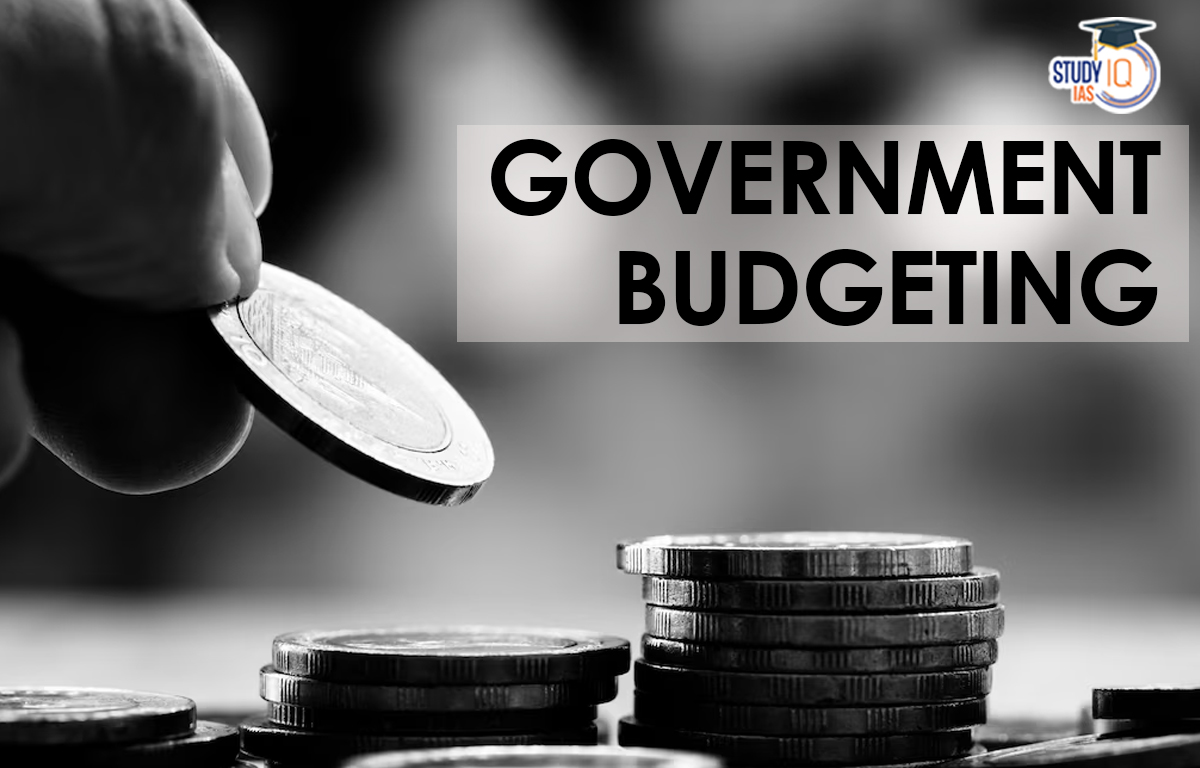Table of Contents
Government Budgeting
A nation’s income and expenses are detailed in the government budgeting, which is a comprehensive document. This yearly report is delivered to the Lok Sabha by the nation’s finance minister in front of the elected officials of the nation. A fiscal year begins on April 1 and ends the following March 31.
The Government Budgeting is an important part of Economy which an important subject in UPSC Syllabus. Students can also go for UPSC Mock Test to get more accuracy in their preparations.
Government Budgeting Meaning
A budget is typically created and re-evaluated on a regular basis and is described as an estimation of income and expenses over a given future period of time. The Government Budgeting, sometimes referred to as the nation’s yearly Financial Statement, is the yearly fiscal statement that shows the nation’s receipts and outlays for a given fiscal year. The legislative deliberates on the government budget, which is approved by the president or chief executive, and the finance minister of the nation prepares it.
Government Budgeting Types
Balanced, surplus, and deficit budgets make up the three categories that make up the budget. Let’s explore them in more detail:
Balanced Budget
When revenues and expenses are in balance, a budget is considered to be in balance. The budget that the administration is aiming to create is one that is balanced.
Surplus Budget
The budget is said to be in surplus if the estimated government revenue exceeds the estimated spending for a fiscal year.
Deficit Budget
If the anticipated revenue is less than the anticipated expenses, the budget is considered to be in deficit. Like every other democracy in the world, India’s budget has typically been in deficit.
Government Budgeting Objective
The budget has a wide variety of goals to accomplish as the most thorough financial document of the nation:
Reallocation of resources
The government wants to redistribute the nation’s resources in a way that is more profitable and welfare-focused, as well as more economically and socially advantageous. The government promotes investment by providing producers with tax breaks, subsidies, etc. For instance, offering incentives promotes the usage of “Khadi products.” Contrarily, the Government imposes high taxes to deter the manufacturing of dangerous consumer items (such as alcohol, cigarettes, etc.).
The government can immediately take on production in specific domains where the attention is needed if the private sector does not show interest, ensuring supply as well as the welfare of the populace.
Bridging income disparity
The government makes an effort to reduce such income and wealth disparities in the nation through its budgetary policies. The government may accomplish this by taxing the wealthiest while increasing welfare spending for the underprivileged.
It will increase the standard of living for the poor while decreasing the income of the wealthy. The government makes sure that wealth is distributed fairly through this procedure as well. The goal must be equitable progress instead of just economic success, which is not a sufficient objective.
Attainment of economic stability
In order to achieve economic stability, the government uses its budget to stop corporate instability in inflation or deflation. Budgetary surpluses during inflation and deficits during deflation aid in maintaining stable prices across the economy.
Management of Public enterprises
The budget is designed to include a number of provisions for funding and operating public sector businesses. The budget prioritizes national monopolies like railroads, electricity plants, water lines, etc. These sectors and companies are primarily managed for the benefit of the public.
Economic Growth
The savings and investment rates of a nation also affect its growth rate. To increase the economy’s overall savings and investment rate, the government includes a number of initiatives in the budget. The budget has sufficient funds set aside for this. The budget also aims to keep the GDP rate high. Enough funding is set aside to expand the production of goods and services in order to achieve this.
Reducing regional disparities
The government’s spending and taxing plans stimulate the construction of manufacturing facilities in economically struggling areas in an effort to reduce regional inequities.
Also Read: Financial Bill
Government Budgeting Components
Revenue Budget
It comprises of Revenue Receipts and Revenue Expenditure. Revenue receipts are receipts that don’t directly affect the government’s assets and obligations. It comprises of the money the government receives from both tax- and non-tax-related sources, including excise taxes, income taxes, dividend income, and profits. The government’s revenue expenditures are those that have no effect on its assets or liabilities. Expenses such as salaries, interest payments, pensions, and administrative costs are examples of this.
Capital Budget
It comprises both capital expenditures and capital receipts. Capital receipts are defined as payments that cause the government’s assets to decline or its liabilities to rise. It comprises of money obtained from borrowings or loan repayments by states as well as money made from the sale of assets (or disinvestment), such as shares of publicly traded companies.
Spending on capital projects can be used to increase assets or decrease liabilities. It comprises of money granted by the federal government in the form of loans to states or repayment of its borrowings, as well as long-term investments by the federal government in building infrastructure like roads and hospitals.
Also Read: Money Bill
Government Budgeting Importance
Although budgets can’t completely ensure economic stability, they do help prevent failure. A budget is a tool for turning a vague idea into a specific, doable, and aspirational objective. It is a method for recognizing and emphasizing the growth of underprivileged individuals. It establishes a benchmark for success or failure in achieving goals, as well as the necessary remedial actions.
Government Budgeting UPSC
We investigated the various facets of governmental budgeting. For India, the budget serves as a mechanism for turning abstract notions of development into specific, doable, and aspirational objectives. Budgets frequently do not provide complete economic stability, but they do aid in success.
It is a tool for identifying and emphasizing the development of underprivileged individuals or communities. It acts as a benchmark for judging whether or not objectives have been accomplished and offers suitable improvement strategies. Students can read all the details related to UPSC by visiting the official website of StudyIQ UPSC Online Coaching.


 World Oceans Day 2025, History, Theme, S...
World Oceans Day 2025, History, Theme, S...
 World Environment Day 2025, Theme, Histo...
World Environment Day 2025, Theme, Histo...
 Unemployment Rate in India, Current Rate...
Unemployment Rate in India, Current Rate...





















